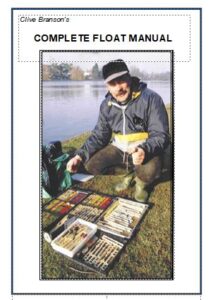
About the Author & Website
With over 60 years of angling experience — from local club waters to Open Matches, Nationals, and the World Championships — I’ve spent a lifetime perfecting and sharing the art of float fishing.
As World Champion (1987), Runner-up (1986), and Gold Medal Team Wales (1989), I’ve had the privilege of learning and competing at the very highest level of our sport. Over the decades, I’ve collected, tested, and refined every known float-fishing method and technique, and I’m proud to pass this knowledge on through this dedicated website.
This site is built for everyone — from the seasoned match angler to the complete beginner. Here, you’ll find the most comprehensive collection of float-fishing knowledge available, blending tradition, modern innovation, and first-hand international experience.
What You’ll Discover
Throughout the website, I explore:
-
🕰️ The history and evolution of floats — where and how they were developed, and by whom.
-
🎣 How to use pole floats, wagglers, stick floats, and every major float type in practical situations.
-
🪶 Diagrams, illustrations, and methods used by myself and other world-class anglers, ensuring a deeper understanding of the craft.
Introduction by Clive Branson
Welcome to my Float Fishing website. It has long been a personal ambition of mine to create a complete reference library dedicated to floats and their many techniques. Angling has evolved dramatically over the years, and I believe it’s the perfect time to bring together both past and present knowledge in one place — using the power of the internet to make it available to all.
Float fishing remains one of the most widely used and rewarding methods on the bank. There’s something uniquely satisfying about catching a fish on a homemade float — a moment where skill, timing, and tradition meet. So much so that the governing body of the World Freshwater Angling Championships (C.I.P.S.) recognises only float-caught fish in international competition.
The Role of the Float
In recent years, we’ve seen an explosion of new float designs, driven by the growing popularity of the pole and the influence of continental innovation. New wagglers, loaded missiles, feeder floats, and advanced stick floats continue to push the sport forward.
But many of these “new” ideas have roots in the past. Through Gold Medal Floats UK, I’ve reintroduced a range of classic designs, rediscovered from old books, magazines, and conversations with some of the great masters of our sport. By looking back at how floats were invented and used, we can better understand today’s designs — and how to use them to their full potential.
The float is far more than a simple indicator. It plays multiple crucial roles:
-
Helps to cast the bait accurately
-
Carries the bait through the swim
-
Presents the bait naturally or unnaturally, controlling speed and depth
-
Registers bites
-
Maintains control of the tackle
-
Hooks and helps to land fish
-
Guides fish away from snags
-
Can attract fish toward the bait
-
Carries loose feed and groundbait
-
Allows fishing in the dark with light attachments
-
Enables long-distance casting
-
And ultimately — catches fish
While these fundamentals may seem obvious to seasoned anglers, it’s surprising how often the true role of the float is underestimated.
Materials & Innovation
The evolution of float design has always been tied to the materials available. Today, we work with advanced compounds — carbon, polystyrene, glass, tungsten, plastics, and composites — combined with precision engineering to create floats of incredible performance and sensitivity.
But it wasn’t always this way. Our angling predecessors relied on crow quill, pith, porcupine, cork, balsa, cane, and, from the 1950s onwards, peacock. Their ingenuity laid the foundations for the tools we use today.
With the arrival of modern adhesives, moulding compounds, and space-age materials, float making has entered an exciting new era — one where tradition and technology meet.
Order the Complete Float Manual
📘 The Float Manual — over 167 pages of knowledge, techniques, and illustrations — is now available.
To order, simply click the book image or contact me directly:
📩 clive@angling-news.co.uk

📘 Download the Complete Float Manual – Instant Access
Bring decades of float-fishing knowledge straight to your screen.
Written by World Champion Clive Branson, The Complete Float Manual is a 167+ page eBook packed with practical techniques, classic float designs, diagrams, and championship-winning methods.
✅ Learn how to use wagglers, stick floats, pole floats and more
✅ Discover the history and evolution of float fishing
✅ Get pro tips and tactics used at the highest level
✅ Ideal for beginners and experienced match anglers alike
💻 Instant Download (PDF) — no waiting, no shipping
💳 Secure checkout with PayPal
👉 Order now and start reading within minutes.